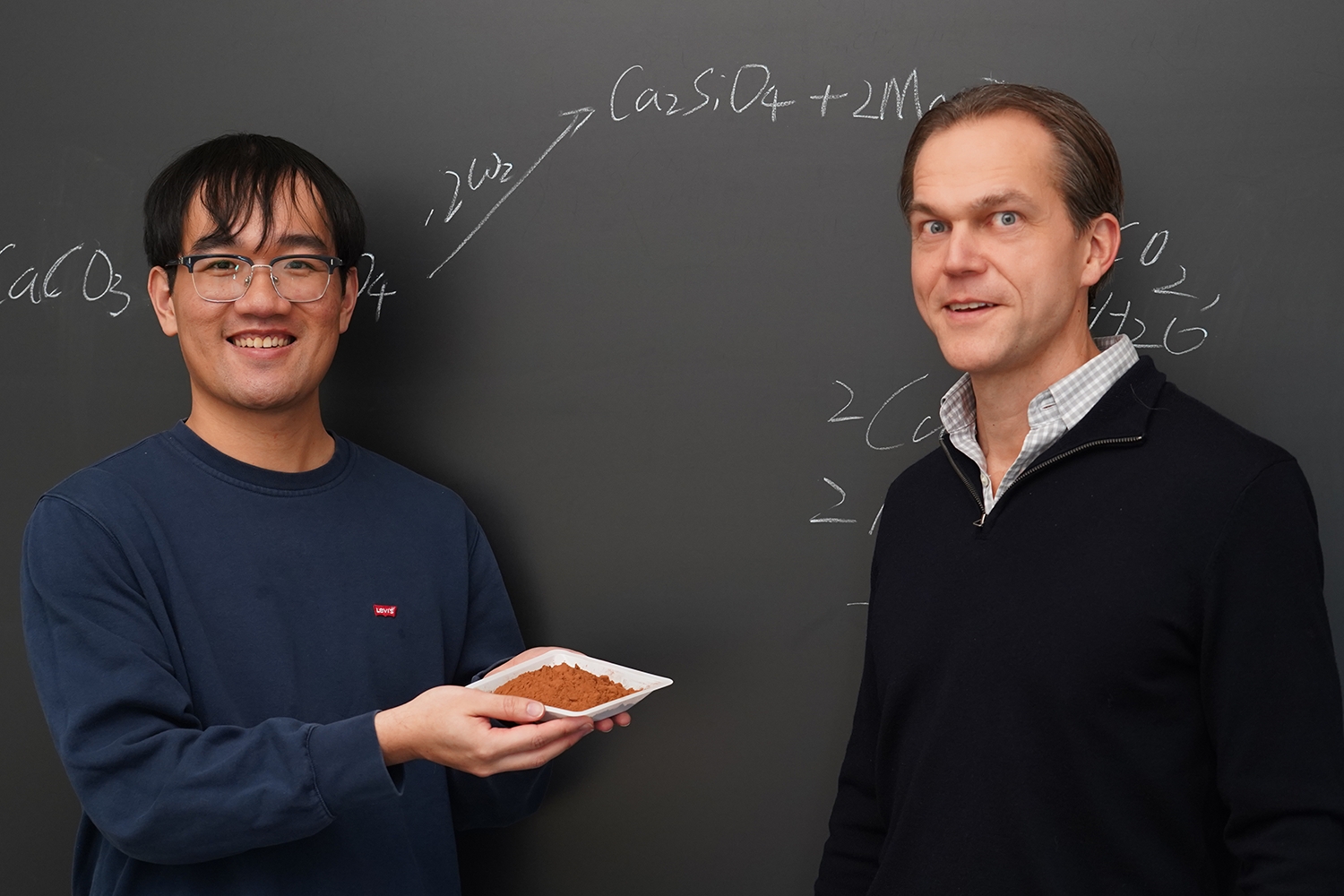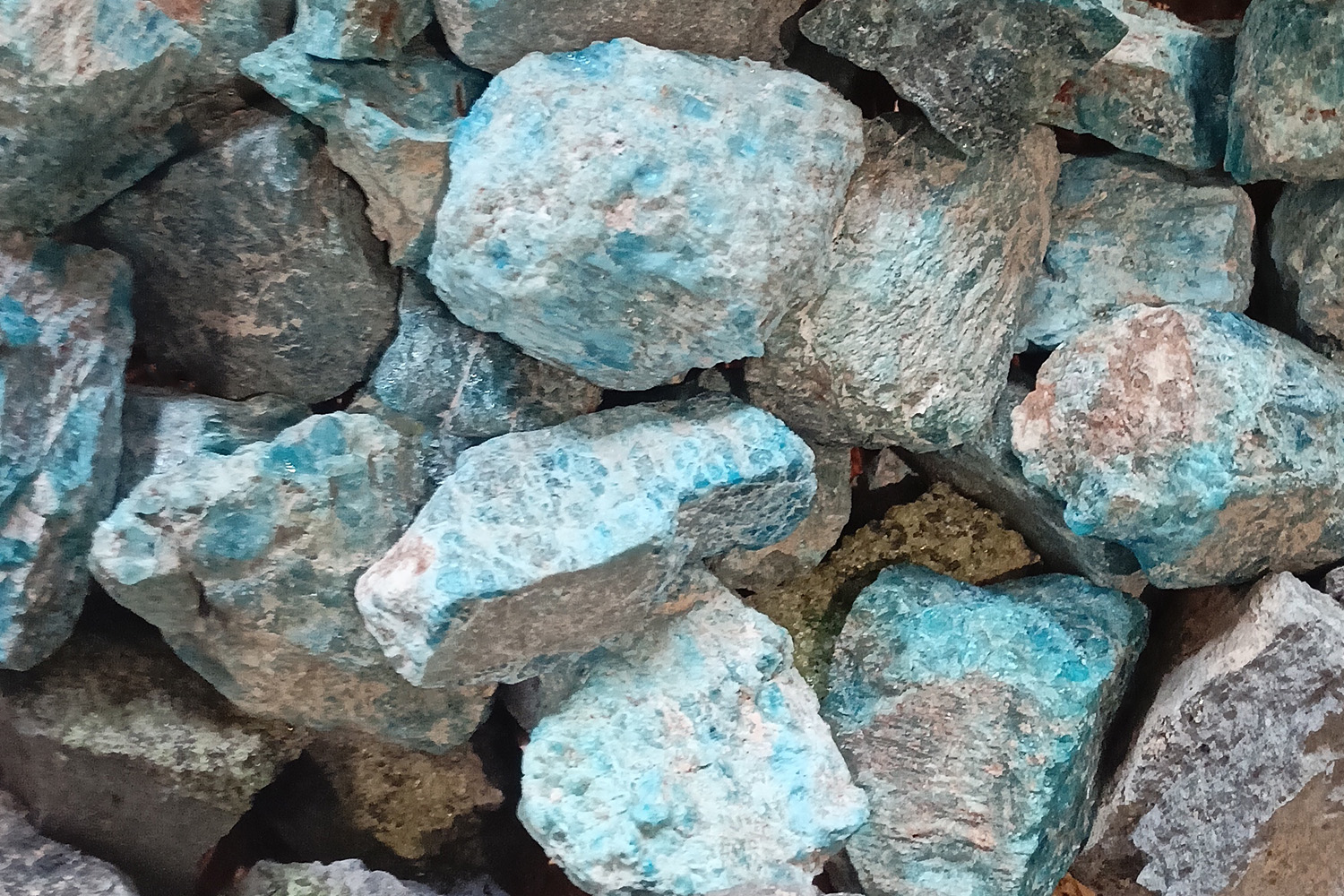We reach more than 65,000 registered users in Dec!! Register Now

Scientists discover low-cost way to trap carbon using common rocks
- February 24, 2025
- 10 Views
- 0 Likes
- 0 Comment
The new process uses heat to transform common minerals into materials that permanently sequester atmospheric carbon dioxide.
Stanford University chemists have developed a practical, low-cost way to permanently remove atmospheric carbon dioxide, the main driver of global warming and climate change.
The new process uses heat to transform common minerals into materials that spontaneously pull carbon from the atmosphere and permanently sequester it. These reactive materials can be produced in conventional kilns, like those used to make cement.
“The Earth has an inexhaustible supply of minerals that are capable of removing CO2 from the atmosphere, but they just don’t react fast enough on their own to counteract human greenhouse gas emissions,” said Matthew Kanan, a professor of chemistry in the Stanford School of Humanities and Sciences and senior author of the Feb.19 study in Nature. “Our work solves this problem in a way that we think is uniquely scalable.”
Enhanced weathering
In nature, common minerals called silicates react with water and atmospheric CO2 to form stable bicarbonate ions and solid carbonate minerals – a process known as weathering. However, this reaction can take hundreds to thousands of years to complete. Since the 1990s, scientists have been searching for ways to make rocks absorb carbon dioxide more rapidly through enhanced weathering techniques.Kanan and Stanford postdoctoral scholar Yuxuan Chen developed and demonstrated in their lab a new process for converting slow-weathering silicates into much more reactive minerals that capture and store atmospheric carbon quickly. A grant from the Sustainability Accelerator at the Stanford Doerr School of Sustainability is now supporting efforts to move the research into practical applications.
 Olivine aérolie weathering naturally. | Renhour48 via Wikimedia
Olivine aérolie weathering naturally. | Renhour48 via Wikimedia“We envisioned a new chemistry to activate the inert silicate minerals through a simple ion-exchange reaction,” said Chen, lead author of the study, who developed the technique while earning a chemistry PhD in Kanan’s lab. “We didn't expect that it would work as well as it does.”
Many experts say that preventing additional global warming will require both slashing the use of fossil fuels and permanently removing billions of tons of CO2 from the atmosphere. But technologies for carbon removal remain costly, energy-intensive, or both – and unproven at large scale. One of the technologies getting much interest and even early-stage investment lately is direct air capture, which uses panels of large fans to drive ambient air through chemical or other processes to remove CO2.
“Our process would require less than half the energy used by leading direct air capture technologies, and we think we can be very competitive from a cost point of view,” said Kanan, who is also a senior fellow at the Precourt Institute for Energy in the Stanford Doerr School of Sustainability.
Spontaneous carbonation
The new approach was inspired by a centuries-old technique for making cement.Cement production begins by converting limestone to calcium oxide in a kiln heated to about 1,400 degrees Celsius. The calcium oxide is then mixed with sand to produce a key ingredient in cement.
The Stanford team used a similar process in their laboratory furnace, but instead of sand, they combined calcium oxide with another mineral containing magnesium and silicate ions. When heated, the two minerals swapped ions and transformed into magnesium oxide and calcium silicate – two alkaline minerals that react quickly with acidic CO2 in the air.
“The process acts as a multiplier,” Kanan said. “You take one reactive mineral, calcium oxide, and a magnesium silicate that is more or less inert, and you generate two reactive minerals.”
As a quick test of reactivity at room temperature, the calcium silicate and magnesium oxide were exposed to water and pure CO2. Within two hours, both materials completely transformed into new carbonate minerals with carbon from CO2 trapped inside.
List of Referenes
- Yuxuan Chen, Matthew W. Kanan. Thermal Ca2+/Mg2 exchange reactions to synthesize CO2 removal materials. Nature, 2025; DOI: 10.1038/s41586-024-08499-2
Cite This Article as
No tags found for this post









